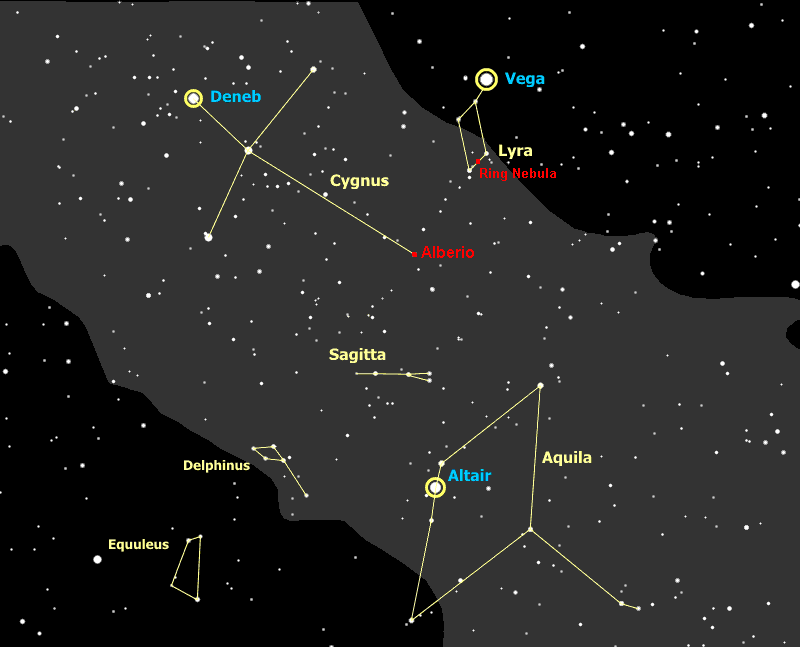and the Guardians of the Nibelung Hoard
by Peter Krüger
©2013
[Germanic Astronomy]
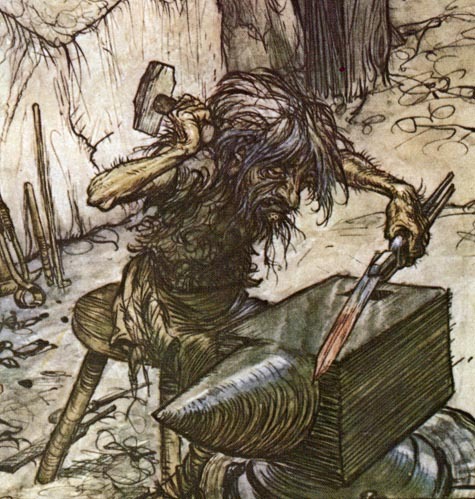 |
For the origin of the famous hoard of the Nibelungs we find several different versions in old lore. But why, and how are they linked together?
The two most important traditions are the German Nibelungenlied
and the Norse Völsunga saga.
Let's have a closer look:
In in the third adventure of the Nibelungenlied, Hagen tells how Siegfried came by chance upon the two sons of the king of the Nibelungs who had just died and who had lived in a hollow mountain. Their names were Schilbung and Nibelung and they were attempting to divide their father's hoard, the hoard of the Nibelungs. They asked Siegfried to make the division for him. For a reason not explained, Siegfried was unable to make the division despite much effort. Fighting broke out and Siegfried slew Schilbung, Nibelung, twelve giants, and seven hundred warriors. He was able to win by the help of the sword Balmung that belonged before to the father of the two brothers. In this way Siegfried gained the Nibelung treasure, though he still had to fight the dwarf Alberich whom he defeated and was made guardian of the hoard. From Alberich he also wins a cap of invisibility.
After this story the fight of Siegfried against a dragon is
mentioned but not directly in connection to the hoard.
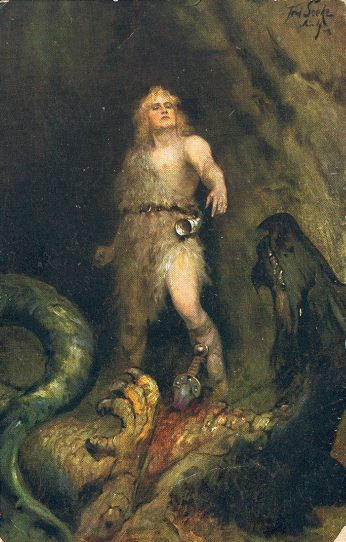 |
In these versions a smith called Regin recounts to Sigurd how Odin, Loki and Hönir were traveling when they came across Ótr, who had the likeness of an otter during the day. Loki killed the otter with a stone and the three Æsir skinned their catch. The gods came to Hreidmar's dwelling that evening and were pleased to show off the otter's skin. Hreidmar and his remaining two sons then seized the gods and held them captive while Loki was made to gather the ransom, which was to stuff the otter's skin with gold and cover its outside with red gold. Loki fulfilled the task by gathering the cursed gold of Andvari's (who is hiding as a fish below a waterfall) as well as the ring, Andvaranaut. Fáfnir then killed Hreidmar to get all the gold for himself. He turned into a serpent or dragon to guard his treasure.
Sigurd dig a pit in which he could lie in wait under the trail Fáfnir used to get to a stream and there plunge his sword, Gram, into Fafnir's heart. The earth quaked and the ground nearby shook as Fáfnir crawled to the water and Sigurd stabbed Fáfnir and later on killed the sleeping Regin by the advice of two birds.
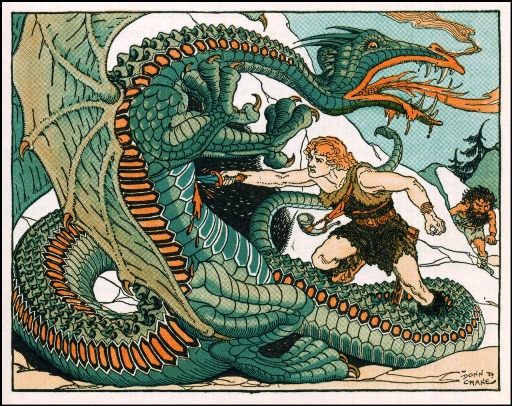
However I come to a different Explanation assuming for both versions an astronomical background.
The version of Nibelungenlied reminds me very much to the story of Velent killing a pair of dwarf brothers with a sword belonging to his father who was killed by a landslide. I explained this tale as star lore describing how the rising of the constellation Scorpio, known in Sumerian cuneiform sources also as 'sword of heaven' is causing the setting of Orion/Vadi standing on the river Eridanus, seemingly buried under the setting Milky Way and the constellation of Gemini, the twin brothers who guard the crossing of the Milky Way with the ecliptic, seen as the gate to a hollow mountain. After the killing of the dwarf twins Velent leaves the scene with the hoard of the dwarfs.
Velent himself I identified (at least in Völundarkvida) with the constellation Hercules, the kneeling man.
I therefore tend to explain the Nibelungenlied version as the setting of Gemini (Schilbung and Nibelung) caused by the rising of Hercules (Siegfried) and Scorpio (Balmung, the 'sword of heaven').
But what about Alberich? The key is the cap of invisibility. It is the same as the Oegishjalmr belonging to the worm/dragon Fafnir and the helmet of Hades. The worm is the constellation Serpens, the Serpent and directly above its head Serpens Caput we find the Northern Crown, Corona Borealis, next to Böotes, the herdsman. Böotes appears in the Völundarkvida as king Nidung/Nidhad and in Greek sources as Hades. The crown is the helmet and cap and gets into possession of Hercules/Sigurd/Siegfried. That Alberich became a 'Knecht', a servant, of Siegfried might indeed relate to the role of Bootes as a herdsman (well, in this case a hoardsman). Note that also king Nidung posesses many treasures, the ones smithed by Velent/Völund/Hercules.
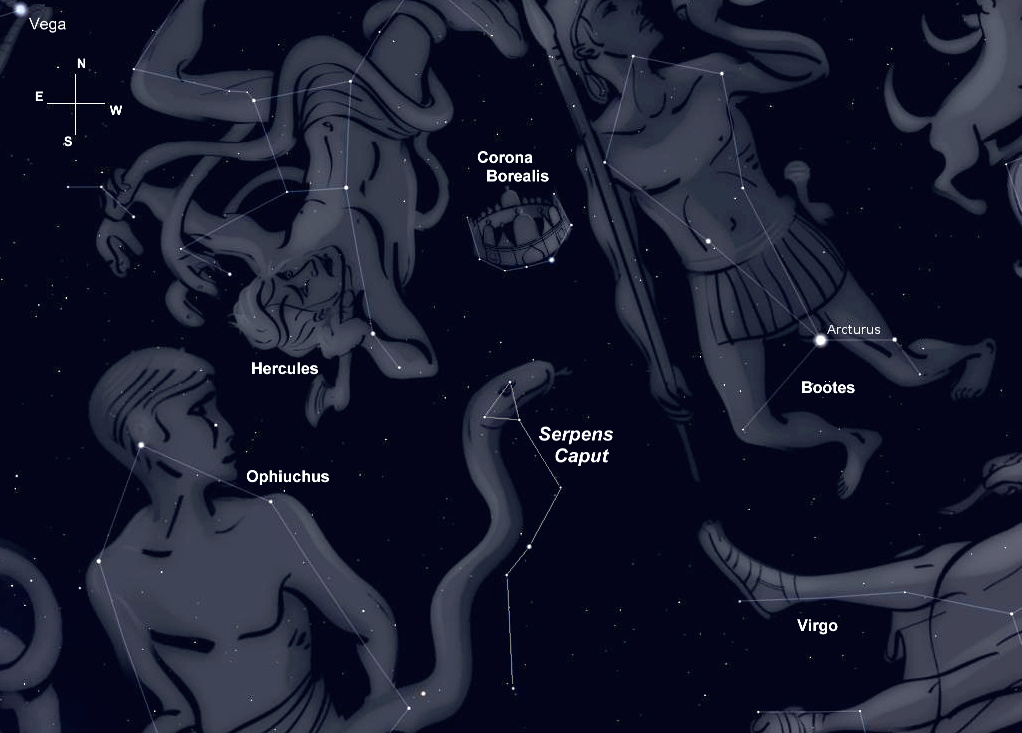
As a conclusion we find two different versions of how the hoard came into posession of Sigurd/Siegfried. The beauty of this theory is that both of these versions make perfectly sense as star lore on their own without assuming that the other version is just a corrupted one.
